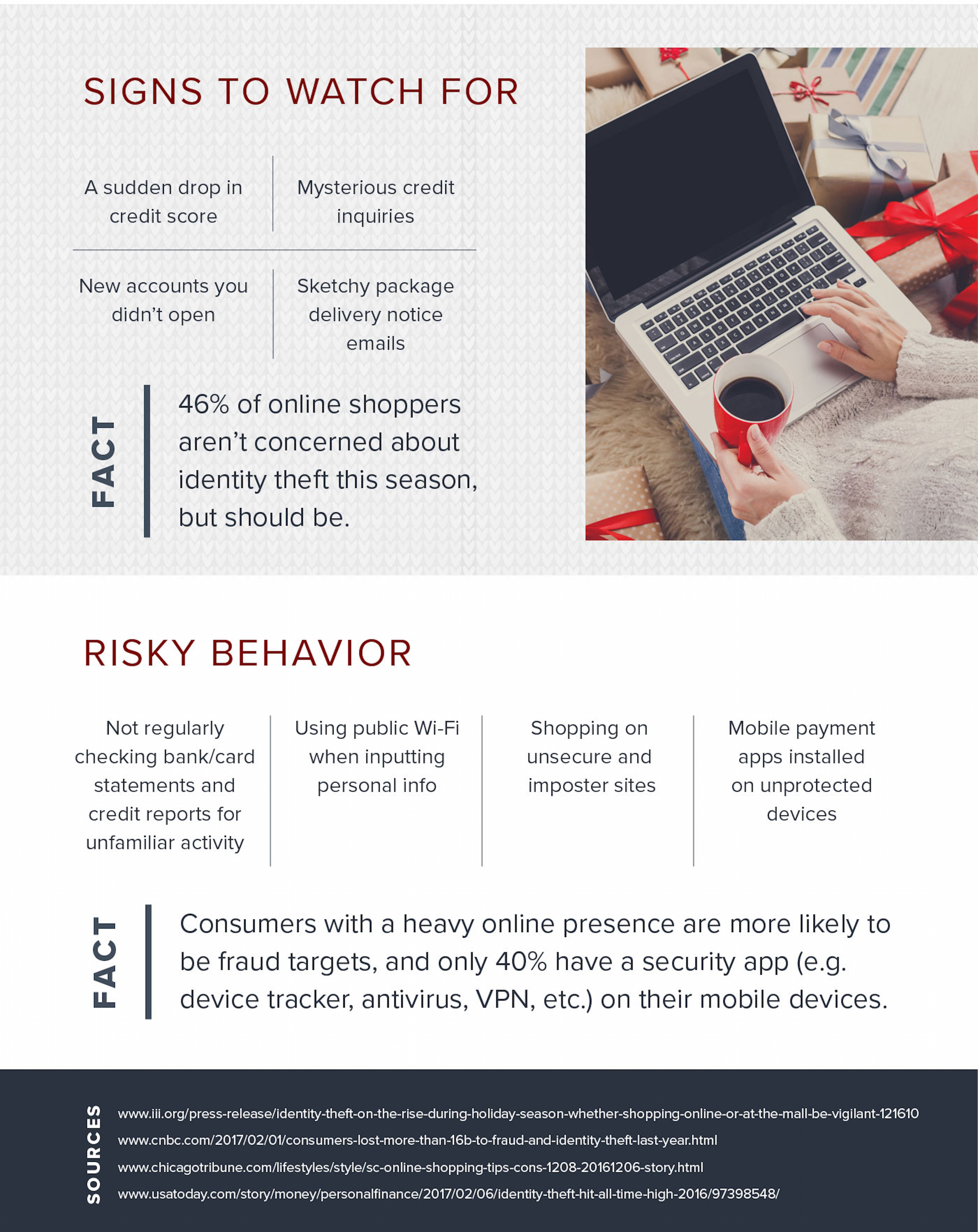Proactively Protecting Your Online Information with 5 Easy Tips
Posted on
by
Derek Erwin

What makes online shopping so attractive? Simplicity and convenience. The ability to fill your digital cart and have it delivered directly to your doorstep is a luxury that 72% of holiday shoppers will take advantage of this season. However, it’s easy to forget about the considerable risk associated with online transactions, especially while exchanging sensitive identity or financial information. With credit fraud and Mac malware on the rise, it’s particularly important to protect yourself with knowledge and a few simple tools that can help you defend your online information against unauthorized access.
The aim of most cybercrime is data theft, and malware is merely one tool in the arsenal criminals have at their disposal to get hold of sensitive personal information. By using a layered approach to security, you can make their job immeasurably more difficult so that your data will be a less tempting target. Here are five important security tips to help you proactively protect your online information.
Tip 1: Update your software
Whether or not you’re concerned about malware on your Mac, malicious software is not the only threat you should be concerned about. We’re talking about vulnerabilities in software installed on your computer. Humans write software and humans make mistakes (to err is to be human, as they say), so software sometimes has vulnerabilities that need to be corrected. One of the main risks is that spyware, for instance, can take advantage of vulnerabilities in third-party software installed on computers and spread silently.
Most software companies update their products from time to time, and popular software is a popular target by cybercriminals, so they frequently update to fix security flaws. While there are many ways that cybercriminals can get to your data, there are many ways you can protect yourself and updating your software is one of them. Be sure your operating system and web browsers (browser plugins in particular) are all up-to-date and protected against all known vulnerabilities before shopping online.
Tip 2: Use antivirus with real-time scanning
Does your antivirus software include real-time scanning? Real-time antivirus scanning is one of the most important features in any antivirus product.
Most people are familiar with antivirus software and typically prescribe to the notion that simply updating malware signatures and running a periodic scan of your computer is all that’s needed. While true that keeping your malware signatures up-to-date is imperative (similar to keeping other third-party software updated), a lot can happen in between scans, which can put your system and your data at risk. Real-time scanning essentially takes the human element out of antivirus protection; in fact, full system scans (manual scans) are technically not necessary these days because of real-time scanning.
If a manual scan is the equivalent of the guards within your castle doing a one-time sweep for threats and then going back to bed, then real-time scanning is like having guards within your castle walls constantly on the lookout for imminent threats every hour of the day. With manual scanning, files are checked for malware only when a scan is run — you will not find an infected file until after it is downloaded and you choose to run a scan. With real-time scanning, your antivirus constantly checks files as they are accessed. In this way, any malware that you come across will be detected before it can run and do damage to your system or steal your data.
Tip 3: Enroll in an identity theft protection service
Monitoring for unauthorized online activity including the use of sensitive financial or identity information can be extremely hard to detect and prevent without assistance. Therefore, it’s still possible that your personal information could be used elsewhere on the web. Interacting with fake ecommerce websites, virus extensions, and phishing scams can put your personal information in the wrong hands.
With cyber identity theft affecting one in every sixteen individuals, and accounting for annual losses that exceed $16 billion, it’s essential to be take the necessary precautions in order to prevent and catch credit thieves and cybercriminals. Therefore, monitoring credit information and frequently checking your billing and account statements for mistakes or potential theft is always recommended, especially if you’ve had your credit or identity stolen in the past. So when considering your security options, look for an identity theft protection company like LifeLock that offers both active web monitoring services and fraud insurance.
Tip 4: Use advanced passwords and security settings
The simplest thing every individual can do is create completely new and unique passwords for every account. Minor variations won’t cut it, especially if you’ve used the same password or pattern elsewhere. When creating a new password, always remember to write it down — but only if you can store it in a safe place. Although saving passwords to your Internet browser is convenient, it’s not the safest practice, because if your computer gets stolen, unauthorized users could have direct access to your accounts.
However, advanced password generators and two-factor authentication and login procedures can make the process easier and reduce your risk of potential cyberattack. For example, two-factor authentication is an advanced setting that allows you to follow a two-step login process consisting of one password, and one authorization code sent to a trusted device or account administrator. Mail clients, social media sites, and other online accounts offer these built-in security features for added layers of protection. To learn more about two-factor authentication and see how to set it up across your online accounts, you can check out this article here.
Tip 5: Be aware of the main risks shopping online
How many people shopping online this holiday season will be cutting through the pleasant haze of excitement to think about their security when checking email, buying that cozy sweater from a random website, or clicking every sponsored link in Facebook promoting deals that can’t be missed? It’s probably a very small percentage. Cybercriminals know this and will be using it to their advantage.
With a little planning before you go on a shopping frenzy and a little awareness when you’re there, you can vastly decrease your odds of being victimized. Below are a few signs to watch for and some risky behavior to avoid when shopping online.
